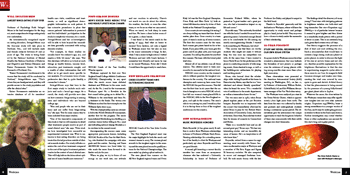Largest Binge-eating Study Will Include Men
 An internationally-recognized expert on eating disorders, Striegel-Moore says the four-year study will take place in Portland, Oregon, and will include male and female subjects between 18 and 50 years of age. The study is being funded by National Institute of Mental Health, the National Institute of Diabetes, Digestive and Kidney Disease, and Kaiser Permanente Center for Health Research of Portland, Oregon.
An internationally-recognized expert on eating disorders, Striegel-Moore says the four-year study will take place in Portland, Oregon, and will include male and female subjects between 18 and 50 years of age. The study is being funded by National Institute of Mental Health, the National Institute of Diabetes, Digestive and Kidney Disease, and Kaiser Permanente Center for Health Research of Portland, Oregon.
“Kaiser-Permanente’s involvement is the reason that the study will be conducted in Portland,” Striegel-Moore says. “That’s where they are headquartered and they will provide access to the study population and offer the clinical sites.”
Kaiser-Permanente maintains an extensive database of all its members’ health care visits, conditions and treatments, as well as significant demographic information on each patient. It has extensive procedures in place that ensure patients’ information is protected and that individuals’ participation in the study is completely voluntarily. As a result, Striegel-Moore and her co-investigators will be able to look beyond the immediate data generally associated the eating disorder studies.
“For example, in these studies we usually know the subject’s age, sex, and maybe a little bit more,” she says. “But this database will allow us to look at such things as health history, income level, education, past treatments sought, and a wealth of other information that will allow us to get much more specific in our analysis. It’s a treasure trove of comprehensive data that is, quite frankly, a researcher’s dream.”
Striegel-Moore says that this is the first major study to include male subjects and such a broad age range. As a result, the study will provide new data on how common binge-eating is in men and individuals who are beyond college-age.
“We know that men and people who are not in their teens and twenties suffer from binge eating too,” she says. “But for some reason they’ve been excluded from major studies.
“One of the innovative components of this study is that we will examine in detail what treatments people receive as part of usual clinical care,” she says. “Prior studies have investigated how successful an experimental treatment was. What is unknown is how eating disorders are being treated in clinical practices outside of clinical research studies. Our study will also examine the cost of our treatment compared to the cost of the typical treatment patients receive in the context of usual clinical care. This will help inform decisions about optimal use of scarce health care resources.”
Download a PDF of the complete article HERE
